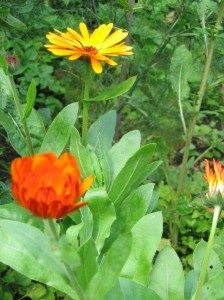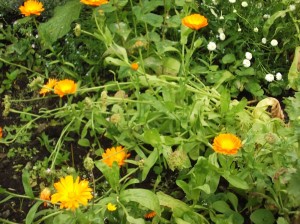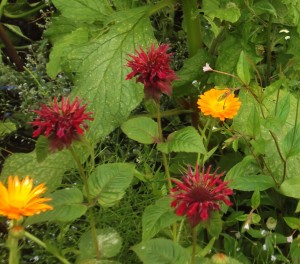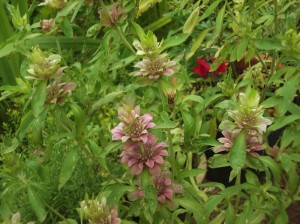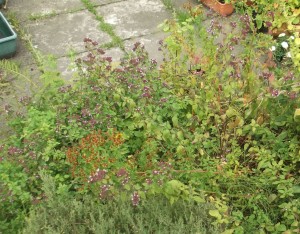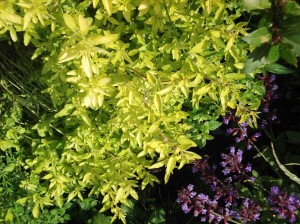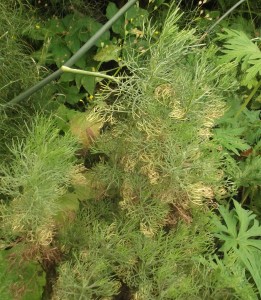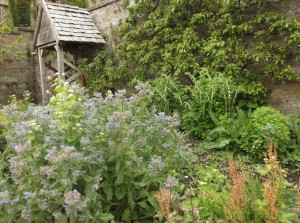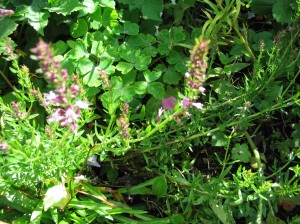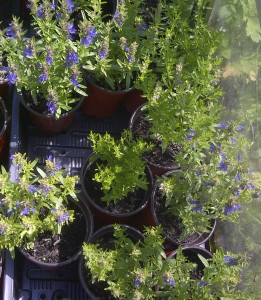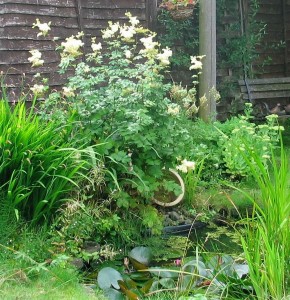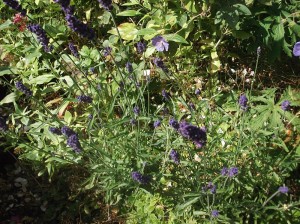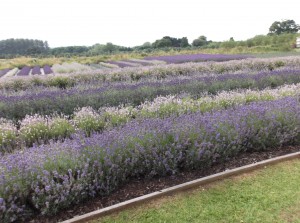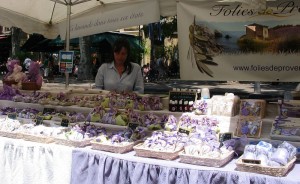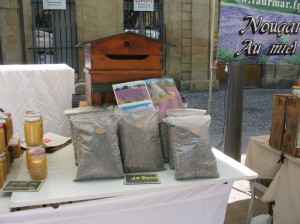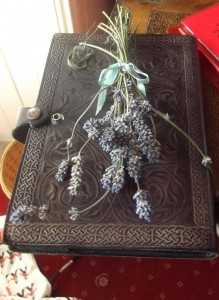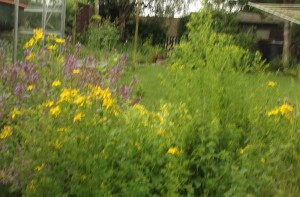 Sorry to push two herbs into one post, but life is busy and we are on holiday for a bit – and so it goes. Anyway I had to do this herb on the feast of St John, didn’t I? In Shetland Midsummer’s Eve is still known as Johnsmass though it’s been secularised in this country – probably since the Puritans. Although pagans would probably point out that St John was probably hitched on to an older festival. Hi-jacked is the word they use, but I reckon that it was simply a recognition that the fun was going to happen anyway—
Sorry to push two herbs into one post, but life is busy and we are on holiday for a bit – and so it goes. Anyway I had to do this herb on the feast of St John, didn’t I? In Shetland Midsummer’s Eve is still known as Johnsmass though it’s been secularised in this country – probably since the Puritans. Although pagans would probably point out that St John was probably hitched on to an older festival. Hi-jacked is the word they use, but I reckon that it was simply a recognition that the fun was going to happen anyway—
This is a relentlessly cheery herb with its vivid colours that go on pretty much until winter shuts it down. And it’s fairly indomitable in seeding itself everywhere too, and surviving poor soil and competition, all of which makes it a good herb for depression. It has some scientific backing too, though you have to watch that it doesn’t make you extra sensitive to sunlight. You can make an oil by infusing the flowers which has a very satisfactory scarlet dragons blood kind of colour. And it is brilliant for the nerve pain you sometimes get after shingles.
 But this time of the year belongs to the roses. There are gallica officinalis, the apothecary rose, and alba semi-plena maxima, the Jacobite rose, originating in the middle East somewhere, and traditionally used for Attar of roses. There are just about enough flowers for that this year, but I’m going to be content with drying petals for pot pourri, and possibly candying some to decorate cakes.
But this time of the year belongs to the roses. There are gallica officinalis, the apothecary rose, and alba semi-plena maxima, the Jacobite rose, originating in the middle East somewhere, and traditionally used for Attar of roses. There are just about enough flowers for that this year, but I’m going to be content with drying petals for pot pourri, and possibly candying some to decorate cakes.
Roses have a lot of uses, from rose petal jam, and cakes, through scented products and cosmetics – the best skin creams I’ve ever used were made with rose oil, though they were scarily expensive – to medicine. It was supposed to soothe and strengthen the heart, calm fevers and ease tickly coughs, stimulate and rouse people who had fainted (much nicer than smelling salts, I feel!) and cure headaches. And the hips can be made into a syrup which is just busting with vitamin C. I mean to make this some time this autumn, but it will be in small quantities. I feel it is a little bit tainted from having been forced on young children because it’s good for them.
And roses are such potent symbols of love – faithful and passionate, loyal and indulgent, romantic and fulfilled. Even if the lovers in the ballads die before they get it together, roses grow from their graves and intertwine, and there’s a happy continuity somewhere.

Meanwhile it is the beginning of harvest time. I picked seven pounds of gooseberries at the weekend, and made some jelly with some of them this morning. I picked the first of the blackcurrants, and I’ve started to pick wild strawberries in ones and twos. Wild strawberries crop all summer long, but it’s awfully hard to get more than a mouthful at once. Oregano, marjoram and southernwood need to be dried, and the lavender and meadowsweet will soon be ready to go too.
 Here are all the cuttings I took earlier. Turns out patience is a virtue after all, and almost all I took have rooted. These are (from the front, working backwards) blue hyssop, santolina, rosemary, a mixed bunch of pink blue and white hyssop, and sage. There are purple sage and lavender in the greenhouse, and when I come back from holiday I’ll take cuttings of the lavender stoechas, southernwood, winter savory, thyme and lemon thyme. It looks like the smallest knot garden in captivity might still happen this autumn!
Here are all the cuttings I took earlier. Turns out patience is a virtue after all, and almost all I took have rooted. These are (from the front, working backwards) blue hyssop, santolina, rosemary, a mixed bunch of pink blue and white hyssop, and sage. There are purple sage and lavender in the greenhouse, and when I come back from holiday I’ll take cuttings of the lavender stoechas, southernwood, winter savory, thyme and lemon thyme. It looks like the smallest knot garden in captivity might still happen this autumn!
